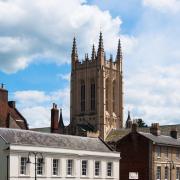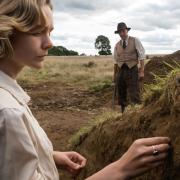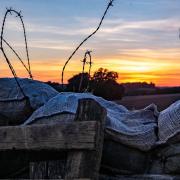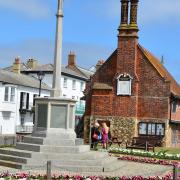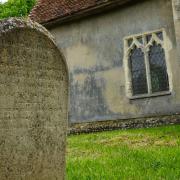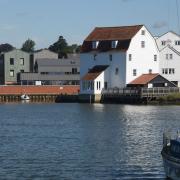Ever wondered about those strange blocks of concrete littered along Suffolk’s coast? A new book explores the county’s defensive role in the Second World War | Words: Catherine Larner

Pillboxes, gun placements, trenches, anti-tank blocks, ‘dragon’s teeth’- when you start to look around, it’s clear the Suffolk coast is peppered with the relics of Second World War defences.
“This was a heavily militarised, fortified landscape,” says Robert Liddiard, professor of history at the University of East Anglia. “We all laugh at this stuff now because of Dad’s Army, but no one was laughing in 1940. Reading the documents of that period, you can almost smell the panic. Suffolk was in the front line.”
The very real threat of invasion from the North Sea meant the military had to respond effectively and efficiently to the opportunities and constraints presented by the topography and geography of the Suffolk coastline.

“Top-down planning mixed with the decision-making that resulted from being in a particular environment,” says Robert. “That’s what gives these wartime monuments their very regional characteristics and flavour.”
Robert, with co-author David Sims, a research fellow at the UEA, have investigated how Suffolk’s coast lent itself to the defences, and how the unique expanse of protected landscape has preserved many of these monuments.
Looking specifically at the Suffolk Sandlings, the area from Lowestoft to Felixstowe, they have presented their conclusions, with extensive maps and illustrations, aerial photographs, excerpts from war diaries, oral history and artistic representations, in a comprehensive new study called A Very Dangerous Locality.

The book describes the anti-invasion defences and the establishment of large training grounds, but it also looks at how these physical remains represent part of the region’s history and collective memory, its heritage and folklore.
The basis for their study has been the discipline of landscape archaeology, looking at the interplay between human affairs and the natural environment, analysing structures and monuments and the pattern they make on the ground. The book is pioneering in adopting this approach to study such recent history.
“Some things about the Second World War are extremely well documented,” says Robert, “but archaeology is very good at shedding light on those aspects of human behaviour which don’t get written down. No one has ever written in a document why they decided to locate a pill box exactly where they did, for example. But you get glimpses of their decision-making through the archaeology.”

The research has taken more than a decade to gather and Robert is clear that it was very much David’s initiative. David started to explore his interest in archaeology after retiring from a career in shipping. He volunteered on digs in Suffolk and Essex, undertook surveys for the Suffolk Archaeological Service, and studied on a course with continuing education.
“I don’t know where the interest came from,” says David. “It could have been TV’s Time Team. Digging is good fun. It’s a nice hobby. Although I enjoyed my two years as a professional, it can be hard work and the pay wasn’t good!”
In 2009, David embarked on an MA in landscape history at UEA, and pursued a dissertation on the archaeology of the Second World War. Robert was assigned as his supervisor.

“When I met David, I was astonished. He is the best researcher I’ve seen in over 20 years of lecturing. He has spent months of his life in the National Archives at Kew, London, going through original records. He has a knack, a skill, an intuitive sense of historical archive, a nose for the sources.
“Someone said that David’s study was a ‘mickey mouse’ subject, that it wasn’t really archaeology. We think of archaeology as excavation, but it is the study of material things. An object doesn’t have to be 2,000 years old to tell you something about the society that created it. My specialism was medieval history, but because David’s project included fortifications, I was considered the best match.”
Their partnership has opened up a whole new area of research for them both. They are already working on applying landscape archaeology to other areas within East Anglia during the Second World War, but they hope that this book will expand the knowledge and awareness of academics, enthusiasts and local communities in appreciating the Suffolk landscape and its history.

“The pillboxes and the gun placements are reminders of a time when British sovereign territory was under direct threat from attack,” says Robert.
“What we see in the landscape of the Second World War is the last time troops might rush ashore on Dunwich beach. Thankfully European powers have not been at war with each other for a very long time.
“Those pillboxes, those monuments are a reminder to us of when things were very different.”




